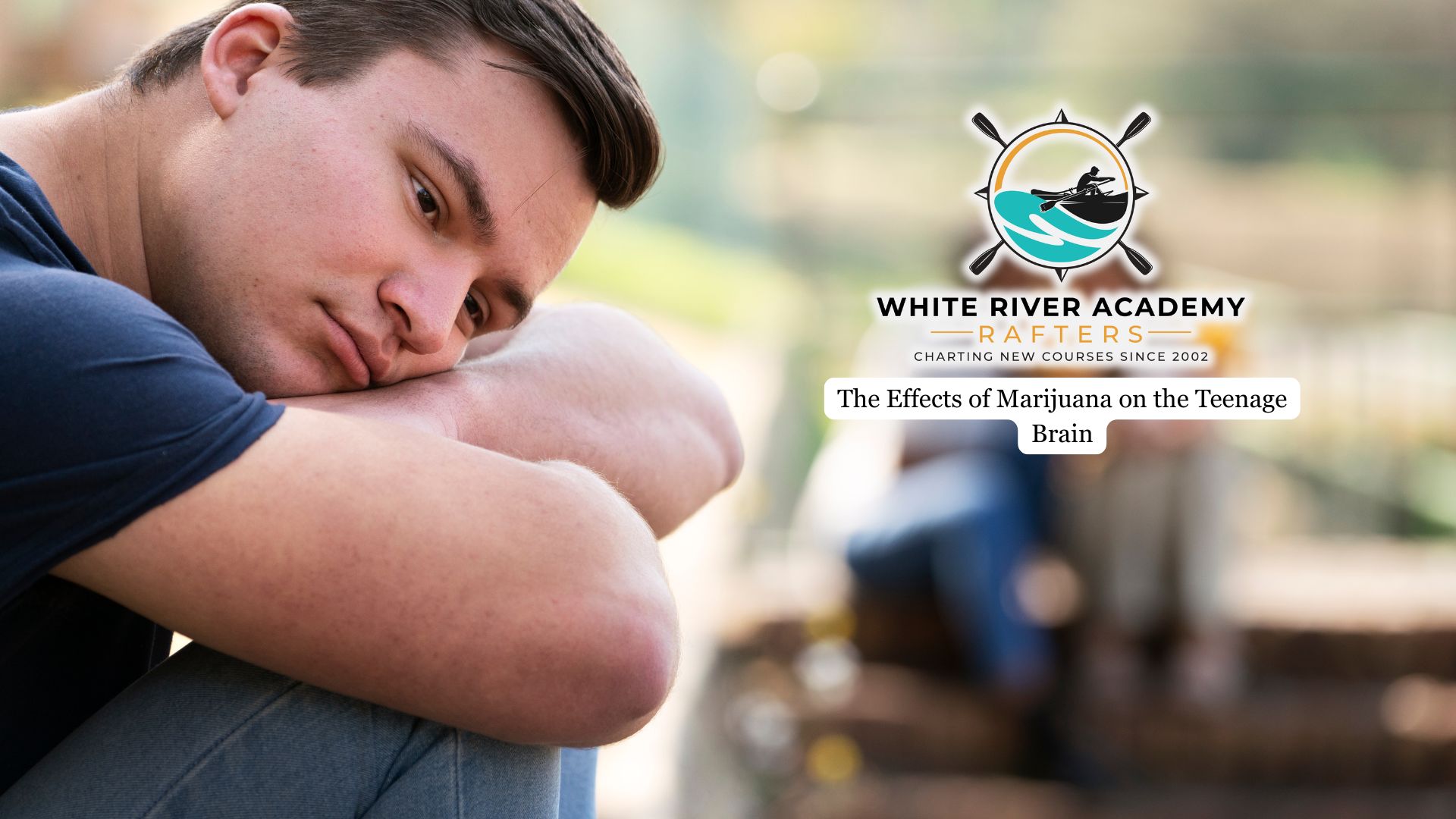Adolescence is a critical period of brain development—and marijuana use during this time can interfere with key processes that shape thinking, memory, emotion, and behavior. Early and frequent use can lead to long-term cognitive and mental health consequences.
This article explains how marijuana affects your teenage boy’s brain and why early intervention and education are crucial for protecting young minds and supporting their future potential.
Understanding the Adolescent Brain Development
The teenage brain undergoes significant changes, particularly in the prefrontal cortex (PFC), which governs decision-making, impulse control, and social behavior. This region continues to mature until about age 25, making it especially vulnerable to external influences such as drugs.
During adolescence, synaptic pruning and neurotransmitter adjustments optimize brain efficiency, but exposure to tetrahydrocannabinol (THC)—the psychoactive component in marijuana—can disrupt these processes. THC interferes with the endocannabinoid system, which plays a critical role in brain maturation, potentially leading to developmental delays and increased risk for psychiatric disorders.
If you’re concerned about how marijuana use may be affecting your adolescent boy’s development, the marijuana addiction treatment in UT we provide at White River Academy offers specialized care designed to support young men through recovery. Our program addresses both the neurological and emotional aspects of addiction in a structured, therapeutic environment.
The Role of THC in Brain Maturation
THC exposure during adolescence disrupts the normal trajectory of brain maturation, particularly in the PFC. This disruption can delay cognitive development and alter neurotransmitter systems, resulting in increased impulsiveness and challenges with executive function.
Adolescent cannabis use is associated with changes in cortical thickness, especially in the PFC, which may underlie observed deficits in attention, memory, and decision-making. The adolescent brain’s heightened sensitivity to THC means that early and frequent use raises the risk of lasting cognitive and psychiatric problems.

Cognitive Impairments Linked to Marijuana Use
Regular marijuana use during adolescence is linked to difficulties in attention, concentration, learning, and memory. These cognitive impairments can hinder academic performance and may persist even after cessation of use.
The earlier marijuana use begins, the greater the risk for long-term negative outcomes, including lower IQ and executive dysfunction. Structural brain changes, such as thinning of the PFC, further compromise cognitive abilities.
To help teens overcome these challenges, cognitive behavioral therapy helps equip adolescent boys with practical tools to recognize harmful thought patterns, improve focus, and rebuild academic and emotional resilience.
The Impact on Decision-Making and Impulse Control
When adolescents use cannabis, it disrupts the crucial development of the prefrontal cortex, which plays a key role in decision-making and impulse control. This disruption can delay cognitive development until around age 25.
Cannabis use during adolescence disrupts the development of the PFC, impairing decision-making and impulse control. THC alters neurotransmitter systems that regulate mood and behavior, leading to diminished self-control and increased risk-taking.
Adolescents who use marijuana are more likely to exhibit attentional impulsiveness and poor judgment, which can have lasting consequences for academic and social success.
Increased Risk of Psychiatric Disorders
Adolescent marijuana use is strongly associated with an elevated risk of psychiatric disorders, including depression, anxiety, and psychosis. Cannabis users are several times more likely to develop schizophrenia, especially if use begins before age 15.
THC exposure during brain maturation increases vulnerability to mental health issues, with risks amplified in those with a family history or genetic predisposition. Even casual cannabis use in teens is linked to higher rates of depression, suicidality, and behavioral problems
Long-Term Consequences of Early Cannabis Use
Early initiation of marijuana use significantly increases the risk of developing cannabis use disorder and other substance use problems. Regular use during adolescence can cause persistent cognitive deficits, including problems with attention, memory, and executive function.
These effects can impair daily functioning and academic achievement, and increase the risk of developing psychiatric disorders later in life.
Co-Use of Marijuana and Alcohol in Adolescents
Simultaneous use of marijuana and alcohol is common among adolescents and is associated with greater health risks than using either substance alone. Co-use impairs cognitive function, motor skills, and judgment, increasing the likelihood of accidents, risky behaviors, and substance use disorders. Adolescents who co-use these substances are more likely to experience academic difficulties, relationship problems, and higher rates of depression and anxiety.
Identifying Signs of Marijuana Misuse
Signs of marijuana misuse in teens include behavioral changes such as unusual laughter, forgetfulness, and loss of interest in activities. Physical signs may include bloodshot eyes, impaired coordination, and the smell of marijuana on clothing.
Other indicators are changes in peer groups, increased secrecy, need for money, and possession of drug paraphernalia. Recognizing these signs can prompt early intervention and support.
Strategies for Parents to Address Substance Use
Parents can help prevent and address marijuana use by maintaining open communication, setting clear expectations, and modeling responsible behavior. Early, honest discussions about the risks of marijuana use, supported by educational materials, can reinforce healthy choices.
Involving healthcare professionals for screening and support, and monitoring for behavioral changes, are effective strategies. A supportive, nonjudgmental approach encourages teens to share their experiences and seek help when needed.
Resources for Treatment and Support
Families and teens can seek help from mental health professionals specializing in adolescent substance use, such as counselors, psychologists, and pediatricians.
School-based programs often provide early intervention and counseling services, while community organizations and hotlines like the Substance Abuse and Mental Health Services Administration (SAMHSA) National Helpline offer confidential guidance and referrals to local treatment centers.
Support groups, including those tailored specifically for teens and their families, can provide peer encouragement and coping strategies.
Digital resources and educational materials are accessible online to help teens and parents understand the risks of marijuana use and the steps toward recovery.
Final Thoughts from White River Academy
Marijuana use during adolescence can significantly disrupt brain development, impair learning, and increase the risk of long-term psychiatric and substance use issues. Early recognition of misuse, honest communication, and timely intervention are key to protecting a teen’s mental and emotional well-being.
If your teen is struggling with marijuana use, at White River Academy we offer marijuana addiction treatment for adolescent boys which provides evidence-based care in a supportive, structured environment. Through individualized therapy, holistic support, and skill-building, we help young men reclaim control and move toward a healthier, more purposeful future.




